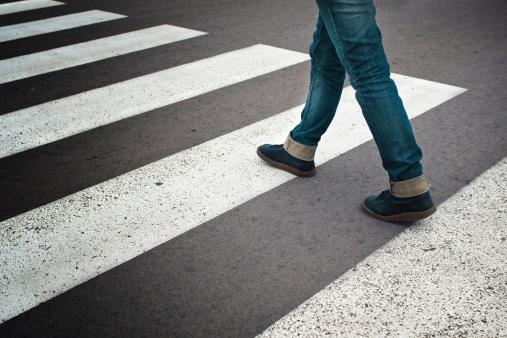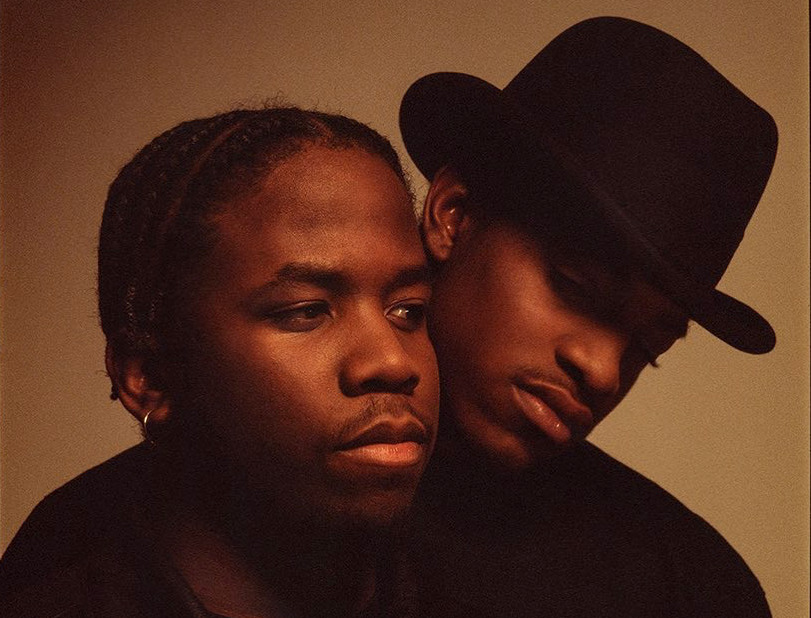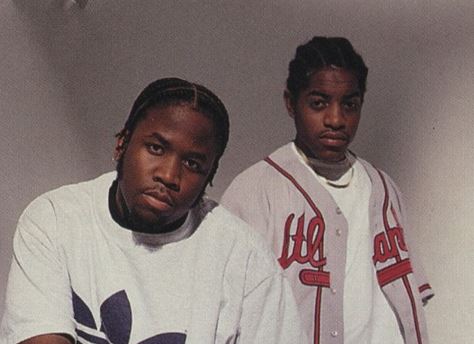



Atlanta’s music scene can be divided into two eras: B.O. (Before OutKast) and A.O. (After OutKast). On April 26, 1994, everything changed.
Before OutKast hit the music scene in the early 1990s, Atlanta was culturally a forgotten city. In hip-hop, New York was the Mecca. Los Angeles and Compton always seemed close to the crown and, arguably, held it for some years.
And other cities such as Houston, Bay Area, Chicago, and Miami all made listeners pay attention to their perspectives in hip-hop. Before OutKast, Atlanta’s mu- sic scene was similar to the ballplayers who could hear the game from outside of the stadium, but never good enough to go inside and play on the field.
Atlanta’s early hip-hop never escaped the barrier of Interstate 285. Kilo Ali, Raheem The Dream and Hitman Sammy Sam were legends from Bankhead to Campbellton Road. But your cousins from California or New York could never relate to the feeling of hearing Kilo Ali’s “Hear What I Hear” while roller skating at Jelly Beans or Screaming Wheels on a Saturday night. At- lanta always had something to say, even when it seemed as if we were the only ones listening. OutKast forced the nation to finally pay attention.
André “Dre” Benjamin, later known as Andre 3000, and Antwan “Big Boi” Patton met in the early 1990s while students at Tri-Cities High School, a school locat- ed in East Point, Georgia. Initially known as 2 Shades Deep, the teen duo would get their big break after meet- ing Rico Wade who was a member of the production trio, Organized Noize.
In 1991, Wade held a job as a manager at Lamonte’s Beauty Supply store in East Point when Dre and Big Boi arrived at the store’s parking lot to showcase their rap skills. Big Gipp, who would be- come a member of the rap group Goodie Mob, blasted A Tribe Called Quest’s “Scenario” from the speakers of his car as Dre and Big Boi rapped for nearly ten minutes straight. Thoroughly impressed by their lyricism and delivery, Wade invited Dre and Big Boi to the Dungeon, a makeshift studio located in the basement of Wade’s mother’s home.
The Dungeon served as the creative space for Organized Noize (Wade, Sleepy Brown, and Ray Murray) to craft music for OutKast and artists such as Goodie Mob, Cool Breeze, Backbone, EJ The Witchdoctor, Big Rube, and Parental Advisory. The collective would be known as the Dungeon Family.
While the Dungeon Family worked on honing their skills in a basement, L.A. Reid and Babyface relocated to Atlanta to start their label, LaFace Records. With back- ing by Clive Davis’ Arista Records and BMG Entertain- ment, LaFace had access to the one thing that most Atlanta-based record labels lacked at the time, worldwide distribution. Initially, a label that focused on pop and R&B music, L.A. Reid would give OutKast an opportunity by first placing them on the remix to TLC’s “What About Your Friends” and giving them a song placement on LaFace’s Christmas album, “A LaFace Family Christmas.” That song became OutKast’s first major single, “Player’s Ball.”
“When OutKast released ‘Southernplayalistic,’ Atlanta was born again. There was a new energy, a new vibe, a new approach to culture. Imagine being present when Langston Hughes, Zora Neale Hurston, and Paul Robeson were crafting their first pieces of work in what would become the Harlem Renaissance. OutKast’s debut album gave rise to Atlanta’s rap renaissance.”

When OutKast released “Southernplayalistic” on April 26, 1994, Atlanta was born again. The city became another place. There was a new energy, a new vibe, a new approach to culture. Imagine being present when Langston Hughes, Zora Neale Hurston, and Paul Robeson were crafting their first pieces of work in what would become the Harlem Renaissance. OutKast’s debut album gave rise to Atlanta’s rap renaissance.
This time, the music felt different. They were telling our story. The kids of Atlanta finally had a voice in hip-hop. OutKast would inherently express the stories of a city through music.
OutKast possessed the lyricism of New York emcees while being able to flow over beats like rappers from the West Coast. They could represent the player motif similar to Memphis’ 8Ball & MJG, and Port Arthur, Texas’ UGK. And they were also as eclectic as New York’s A Tribe Called Quest and California’s Hieroglyphics. OutKast delivered rap verses through thick Southern accents that embodied our reality of being young, black, and from Atlanta. The group did not seek to appease other regions that, at the time, had a strong- hold on rap. OutKast introduced the rap industry to Atlanta and, in a sense, the rap industry would eventually become headquartered in Atlanta.
“I remember life in Atlanta before OutKast, and it’s nothing like it is now,” T.I. shared with me during an interview. “Although we appreciate Sammy Sam, MC Shy D, and Kilo Ali, until OutKast, So So Def, and LaFace came, we weren’t recognized and appreciated abroad like we are now. I believe they got it here.”
Quavo of Migos also shared his thoughts on OutKast’s impact on rap. “Atlanta builds and creates when it comes to music,” Quavo said during an interview in 2016. “We come from the North Side and Atlanta em- braced us as the young wave and young creators. I feel like they created us and we’re just keeping it going. At- lanta has always been creative. The city became what it is because of legends like OutKast.”
OutKast would prove their greatness over the decades after initially being shunned by New Yorkers. During the infamous Source Awards on the night of Aug. 3, 1995, OutKast endured heckles and boos at the Madison Square Garden Paramount Theater. The ceremony amplified the bicoastal rap beef between Death Row Records and Bad Boy Entertainment and OutKast were likely victims of the intensity in the room that night. Following their win for the Best New Artist of the Year award, Dre challenged the rowdy New York crowd with the declaration, “The South got something to say!”
In the years following that night in 1995, the South would say and do a lot on its way to dominating every aspect of rap. Ludacris, T.I., Jeezy, Gucci Mane, Future, Young Thug, Migos, Lil Baby, 2 Chainz, 21 Savage, Gunna, Latto, and others owe OutKast for paving a way for rappers from the South to be heard.
When artists are successful, it impacts an economy within a city. Employment opportunities can increase for managers, publicists, journalists, graphic designers, videographers, stylists, make-up artists, sound engineers, producers, DJs, and others who contribute to the ecosystem of a thriving music scene.
In terms of culture and business, April 26, 1994 will forever be remember as the day OutKast changed the landscape of Atlanta.
This article features an excerpt of “Trap History: Atlanta Culture and the Global Impact of Trap Music.”
The post OutKast Released Their Debut Album 30 Years Ago: How ‘Southernplayalistic’ Changed Atlanta History appeared first on Atlanta Daily World.
Yep. Climate change is going to produce a mad scramble for relocations from areas burdened with floods, wildfires, & hurricanes – and Atlanta is going to be a natural target for climate refugees.
Planning for sustainable, equitable density is crucial. It’s our responsibility. Accept it.

Atlanta officials announced at an April 24 press conference that they’re ahead of schedule on the Southside BeltLine Trail — the completed portion will create 17.9 miles of continuous paved trail ready by early 2026.
The 1.9 miles of Southside Trail stretching from Pittsburgh Yards in southwest Atlanta to Boulevard in southeast Atlanta were originally scheduled for June 2026 completion, but the timeline has moved up to the first quarter of 2026.
Now, the “J” piece of the BeltLine will be ready for the millions of visitors headed towards Atlanta for the 2026 FIFA World Cup, where Atlanta will host eight matches including a semi-final.

“You are about to see your dollars at work delivered ahead of schedule and under budget, to be able to have what we call the ‘J’ to get you from Piedmont Park all the way over to the west side, to Washington Park up to Westside Park,” Atlanta Mayor Andre Dickens said.
The trail construction is funded largely by the Atlanta BeltLine Tax Allocation District, but the shortened timeline is possible thanks to additional federal funds.
“Because of what’s happened locally, with our special service district, our funding from our federal partner, the philanthropic community and also the growth of the Tax Allocation District, the BeltLine is in a strong position to complete the entire 22-mile loop by the end of 2030,” BeltLine CEO Clyde Higgs said.
In 2023 the United States Department of Transportation awarded a $25 million grant, the largest federal grant in the BeltLine’s history for parts of the Northeast Trail through President Joe Biden’s “Investing in America” initiative.
“This remarkable trail of roughly 20 miles, I believe, is a trail of opportunity, inclusion, and development,” White House Senior Advisor Tom Perez said.
The advisor said many infrastructure projects from the prior generation often divided communities, but equity-focused development like the BeltLine learned from the past and “brings communities together.”
BeltLine CEO Higgs said the development is done with the local community in mind. The finished 22-mile loop will connect 45 Atlanta neighborhoods and increase pedestrian traffic for small businesses along the trail.
“Imagine being able to jump on a bicycle or a scooter, or if you’re ambitious, you literally will be able to walk from Piedmont Park all the way to Washington Park on the Westside,” Higgs said.
Officials promoted the BeltLine as an alternative to cars for visitors and locals alike, but the future of transit on the trail system is still undetermined.
While officials promoted BeltLine as an alternative to car commuting for visitors and locals alike, the future of transit on the trail system is still in flux. Dickens’ announcement of four new MARTA infill stations across the city, with some around the BeltLine, reignited debate over the long-standing plan to build light rail on the trail.
Rail on the BeltLine has been divisive, but Dickens and Higgs reaffirmed support for transit on the 22-mile loop. The southside portions are being built with infrastructure for future transit — whatever that may look like.
“We’ve got to figure out transit within the city of Atlanta,” Higgs said.
Dickens recently said the city is exploring different options for transit along the BeltLine, which he reiterated at the Wednesday press conference. The mayor explained rising construction costs and changing modality have shifted his original support for light rail into options like “autonomous vehicles.”
But he said the ultimate goal is to create a transit system that’s going to “live on for centuries” in the city as it grows.
“We want transit on the BeltLine as well, that’s my interest, and that’s my goal,” Dickens said.
The post Atlanta BeltLine’s Southside Trail on track to be ready for FIFA World Cup appeared first on SaportaReport.


“Decarbonization has design value. It’s part of the design process, not a separate thing,” said Marieke Lacasse, FASLA, principal at GGLO, during the second in a series of webinars organized by the ASLA Biodiversity and Climate Action Committee.
Lacasse outlined practical strategies landscape architects can apply to reduce the carbon footprint of parks, plazas, residential communities, and other landscapes.
A landscape’s footprint depends on how much concrete, steel, aluminum, and other carbon-intensive materials it incorporates. These materials create high amounts of embodied carbon in comparison with other materials, like wood, which store carbon.
“A highly active urban plaza will have lots of hardscape,” Lacasse said. But designers can still find ways to minimize hard surfaces and structures to reduce climate impacts.
One tool for figuring out how to cut these materials is Climate Positive Design’s Pathfinder. It shows landscape architects the carbon impacts of the materials they choose for a project.
Climate Positive Design and the ASLA Field Guide to Climate Action call for 70 percent of all landscapes to be “softscape,” covered in trees, plants, and soils, and 30 percent to be hardscape.
To get there, Lacasse said landscape architects should cut unnecessary concrete surfaces and swap in decomposed granite, local stone or wood pavers, or recycled materials.
Conventional asphalt, which is commonly used in streets and trails, can be swapped for pervious asphalt, which is lower in carbon. Existing asphalt can also be cut and reused.
Reducing high-carbon materials overall provides benefits. “We can rethink our designs. Do you need a 10-foot-wide concrete or asphalt path, or can you make it 5-feet-wide and add decomposed granite to the edges?”

“Instead of a concrete seat wall, design a wood one. Instead of concrete retaining walls and terraces, slope the grade,” she said.
Reducing materials with high embodied carbon is one step for reducing emissions from landscape architecture projects. The other side is significantly increasing the amount of carbon stored in a landscape. If the amount of carbon sequestered is more than the amount emitted by its construction or operations, it’s climate positive — a net carbon sink.
Biodiverse landscapes, with layers of trees and understory plants, store more carbon. But maximizing carbon storage in a landscape is complex. “We look at the growth speed and life span of trees and plants, the planting strategy, how to weave in biodiversity,” Lacasse said.

Trees, plants, and soils all store carbon but at different rates. “Evergreen trees have a faster carbon absorption rate. Deciduous trees have larger canopies and denser wood so they store more carbon, but their absorption rate is slower.”

Large trees store more carbon than smaller trees, so it’s important to keep existing trees whenever possible.

For a new two-acre community in Seattle, with community gathering places, playground, and a creek, GGLO first created a design using conventional concrete, asphalt, and metal play equipment (see images at top).
Using the Pathfinder tool, they found the site would take 92 years to become climate positive. That is how long it would take for the carbon stored in the trees, plants, and soils to be greater than the carbon emitted through the site’s materials and construction.
But with some changes to the design — including recycled asphalt and concrete; bamboo decking; and wood seatwalls, play structures, and surfaces — it could take 32 years to reach climate positive, a decrease of 60 years.
Andrew Wickham, ASLA, a project leader at LPA Design Studios, explained how landscape architects can better measure carbon in their projects and for their clients, using a mix of tools like Carbon Conscience, Climate Positive Design, iTree, Tally, and the Embodied Carbon in Construction (EC3) calculator.
“We can’t manage carbon without measuring it. These tools can make designers feel empowered,” he said.
From his work with the tools, he found that “the decarbonization potential is higher with hardscapes. Reducing the use of these materials is better than pumping up planting. You can’t plant the heck out of a project to offset embodied carbon. Reduce first and sequester second.”
And Mariana Ricker, ASLA, an associate with SWA, explained how landscape architecture firms can weave carbon considerations into their internal design workflow. “It is just another layer in the process.”
To make that workflow clearer, SWA developed its own decarbonization guide. “We use it to advocate to clients, empower our designers, and prioritize. Not all projects have the same carbon potential.”
She urged landscape architects to carefully consider the materials they select for projects. “It’s important to be as low carbon as possible upfront.”
“When a material has been produced, those embodied carbon emissions are in the atmosphere. We have a limited time span with the climate crisis. Reducing emissions must be our priority. Sequestration happens later, over time.”